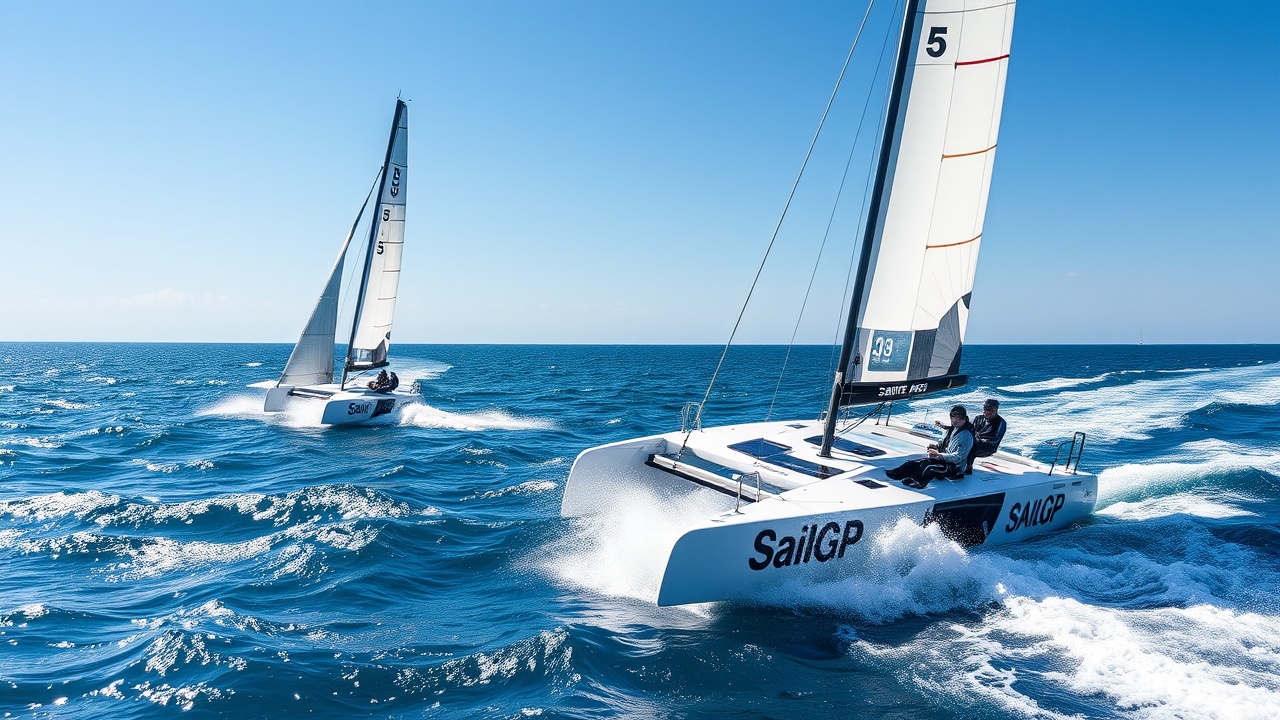SailGP Race Controversy
In a dramatic SailGP race, the championship made headlines as an umpire’s controversial decisions altered the course of two teams’ chances within just 110 seconds of the start. Brazil faced penalties for an early jump at the start, while Australia was implicated in a near-collision situation that forced Canada into evasive maneuvers. Commentator Todd Harris noted,
“Ohhhh! Craig Mitchell delivering tough decisions for the Brazilians!”
Meanwhile, Canadian sailor Giles Scott remarked,
“Craig, that was a black flag incident. We nearly cut a boat in half there.”
After the race, Australia’s Tom Slingsby expressed disbelief over the officiating, stating,
“I am still baffled by the decision — that cost us the final.”
This highlights the high stakes involved as SailGP aims to push the boundaries of sailing through technology.
About SailGP
SailGP, founded in 2019, features twelve teams in a competitive format backed by high-profile investors like Kylian Mbappe and Ryan Reynolds, and aims to demystify sailing, often seen as an elitist sport. Unlike many other sports, SailGP has embraced technology from the outset, utilizing military-grade GPS systems to monitor the race. The organization claims that its use of advanced tracking has transformed officiating, allowing the team, led by chief umpire Craig Mitchell from a London studio, to supervise races with precision that was previously unattainable.
Umpiring Technology
During competitions, umpires generally face turbulent conditions while attempting to follow the often chaotic actions at sea, but Mitchell operates from a calm environment, aided by sophisticated software—UmpApp. This tool presents the moving raceboats (the F50 catamarans) against a simple blue backdrop using graphics reminiscent of 1980s video games, yet offers pinpoint accuracy to within 2.5 centimeters, making it instrumental for real-time decision-making.
Safety and Decision-Making
For context, SailGP’s races take place under extreme conditions, with F50s capable of reaching speeds over 60 mph (100 km/h). Each crew member is secured with safety tethers, reflecting the serious safety considerations in high-speed racing. As umpires, they must make swift decisions, often within a self-imposed limit of ten seconds, and anticipate potential infractions without halting the race. Mitchell emphasizes that their centralized location benefits consistency and enhances the overall accuracy of their decisions.
Transparency in Officiating
The association with other sports officiating systems, such as VAR in soccer, is noteworthy. Mitchell recognizes the criticisms surrounding VAR’s lack of transparency during matches. In contrast, SailGP strives for open communication not just between umpires and teams but also through public channels. Before races, teams are briefed and provided with insights post-event, engaging in a process that invites feedback and assessment of any contentious decisions, such as during incidents in the recent Grand Prix.
Impact of Penalties
At the event, penalties can shift the competitive landscape significantly. The Brazilian team was ranked low following a premature start, while Australia faced heavy penalties for complicity in a congested scenario involving several boats. Mitchell reflected on the race decisions even hours later, confident in their current accuracy rate of approximately 98%.
Commitment to Improvement
In the face of evolving technologies, and with his team closely aligned through effective communication on race day, Mitchell is committed to transparency. He emphasizes the importance of bringing past sailing experience into officiating roles, suggesting that understanding the nuances of competition is vital to anticipating and implementing appropriate judgments. The adjustments SailGP has made in approaching officiating could act as a model for other sports grappling with the integration of technology and the need for clear communication. With the league’s progressive stance and commitment to accuracy, it continues to lead the way in modern sports officiating.




